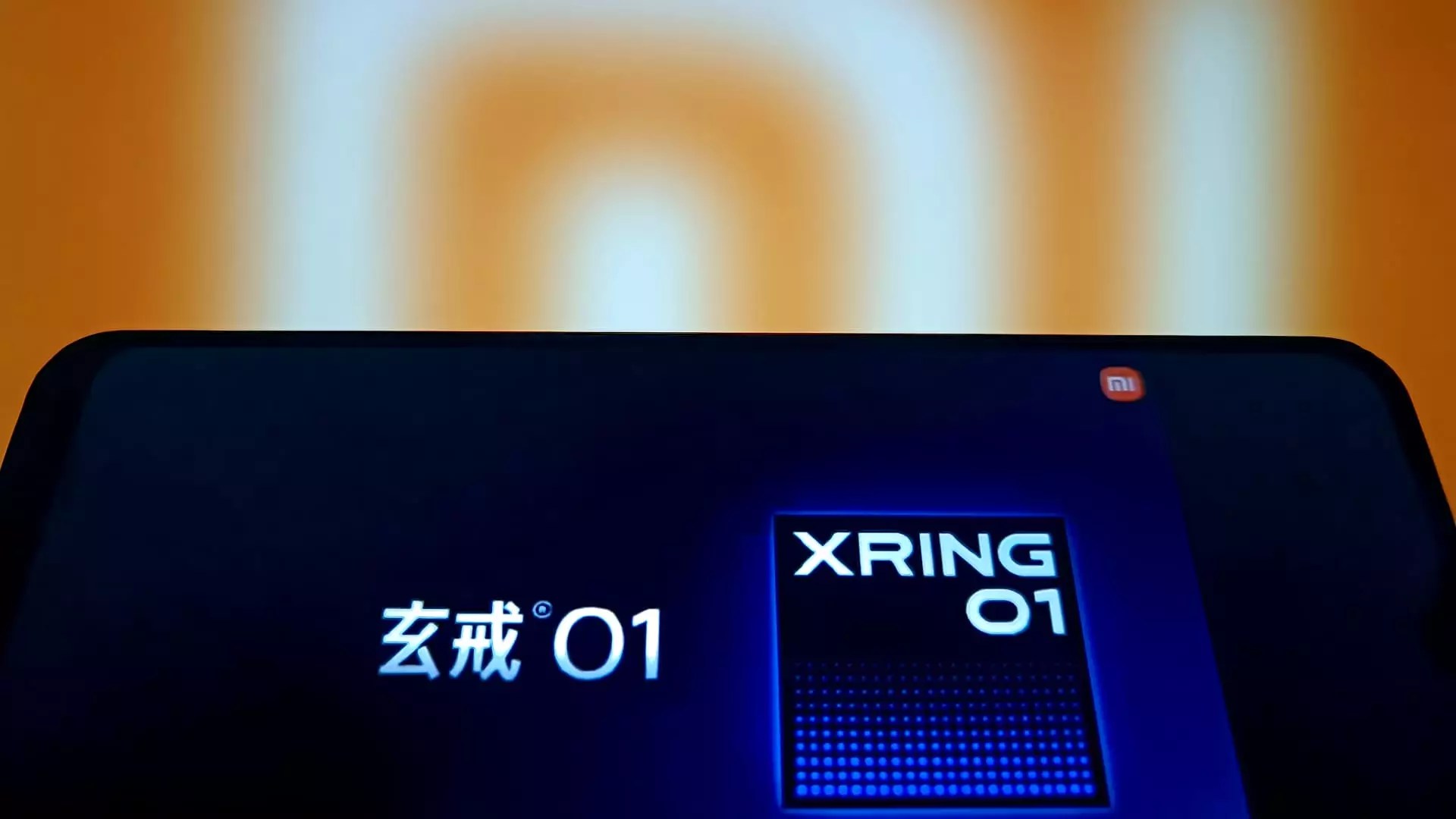In an audacious move that could redefine the smartphone landscape, Xiaomi has unveiled its new flagship model, the 15S Pro, which directly takes aim at Apple’s coveted iPhone series. The launch reflects a growing trend in which consumer electronics are not merely transactional purchases but rather status symbols in a highly competitive market. For a starting price of 5,499 yuan ($764), the 15S Pro is significantly more affordable than the iPhone 16 Pro, priced at 7,999 yuan, and the iPhone Pro Max, which begins at 9,999 yuan. The strategic pricing leverages a state-subsidized discount that makes the Xiaomi option even more compelling for Chinese consumers.
In a highly scrutinized marketplace, this price difference exemplifies Xiaomi’s understanding of its target demographic—price-sensitive yet quality-driven consumers. This isn’t merely about saving money; it’s about challenging the elitist narrative surrounding Apple products. Xiaomi presents itself not just as a competitor but as a viable alternative in a market overly dominated by the Apple brand. The era of exclusivity might be at a crossroads.
Technology Versus Perception
At the heart of Xiaomi’s challenge is the newly developed Xring O1 chip, which CEO Lei Jun asserts surpasses Apple’s A18 Pro in several key performance metrics. While such claims still await verification, they indicate Xiaomi’s commitment to innovation and technological development, identifying itself as a serious player in the global tech arena. The ability to run games with lower heat indicates potential benefits in battery efficiency—a crucial factor for users who demand longevity from their devices.
Yet one can’t help but question the validity of these assertions and the timing of their announcement amidst intense scrutiny regarding China’s aspirations in high-tech industries. The advancing U.S. restrictions on China’s semiconductor capabilities have created an environment of uncertainty. Xiaomi’s ambition to invest 200 billion yuan over the next five years into research and development might be seen as a statement of defiance, signaling that the company plans to navigate through these challenges rather than capitulate under external pressures.
Consumer Behavior and Brand Loyalty
The issue of brand identity becomes increasingly pertinent in this technological tug-of-war. Apple has long built its empire on a fortress of brand loyalty and aspirational marketing. Lei’s acknowledgment of Apple’s status as “number one” during the launch event feels almost like a strategic admission—recognizing the weight of brand perception and the cult-like following Apple commands. Yet, this doesn’t necessarily mean Xiaomi is relegated to the shadows. Rather, it presents an opportunity to carve its niche for a demographic that demands quality without the exorbitant price tag.
Brand loyalty is a fickle mistress; consumers no longer view the rivalry as a simple dichotomy between two companies but as a reflection of their values and purchasing power. As prices rise and economic conditions fluctuate, more users might start questioning whether they wish to invest in a premium device or choose a brand that offers competitive features at a more accessible price point.
More Than Just Smartphones
One of the intriguing aspects of Xiaomi’s strategy is its cross-industry ambition encompassing the automotive sector. The launch of the SU7 sedan—priced substantially below Tesla’s offerings—demonstrates Xiaomi’s intention to disrupt automotive market norms, just as it has in smartphones. Moreover, the early withdrawal from the market of their latest model, due to a tragic accident, raises fundamental questions about safety assurances and corporate responsibility, further complicating consumer trust.
While a smartphone from Xiaomi may contain cutting-edge technology that rivals Apple’s core offerings, consumers may weigh the overall ethos of the companies against their personal values and experience. With aspirations to disrupt multiple markets, it remains to be seen whether Xiaomi can successfully foster a brand that stands for reliability and innovation beyond merely being a cost-effective alternative.
Navigating the Future
Xiaomi’s determined push into multiple tech sectors illustrates a company unwilling to rest on its laurels. By challenging the paradigms set by established giants like Apple, it promises to invigorate the market with competition and innovation. However, to fully realize its potential, Xiaomi must simultaneously address consumer sentiment around quality, safety, and brand perception. As it navigates the complexities of international relations and economic landscapes, it could set the stage for an exhilarating chapter in consumer electronics. Ultimately, the consumer will wield the most significant influence, deciding whether they are indeed ready to opt for substance over superficial allure.


Leave a Reply